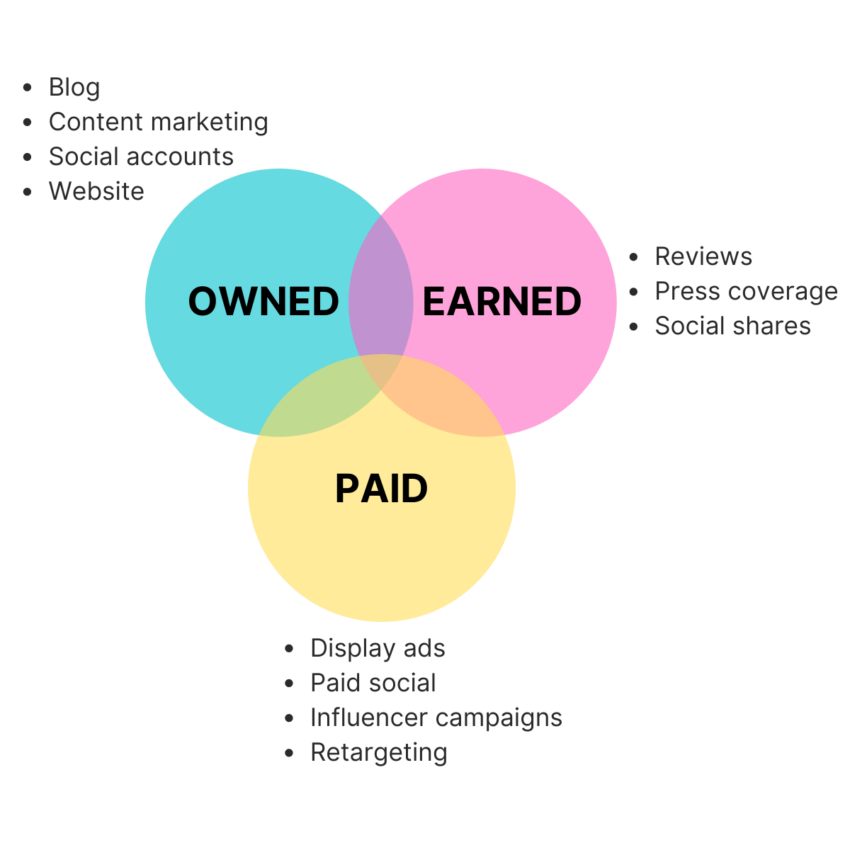Here's How PR can Drive Revenue: 2021-2022
We talk a lot about sales and marketing alignment, how marketing should be measured according to its contribution to revenue, and the importance of an effective revenue generation engine. But one thing we don’t talk about as much is the role of public relations in sales and marketing strategy. What does PR do? How does it contribute to a company’s sales and marketing efforts?Let’s start by making sure we’re all talking about the same thing.
What is public relations anyway?
Public relations is the function of shaping public perception of a company or person. We use a lot of different terms to refer to these activities, including:
- Public relations, aka PR
- Communications, aka comms
- Media relations
- Earned media
- Publicity
These are all slightly different sides of the same coin, and their goal is driving awareness and managing reputation.Depending on your work experience, you may just think about public relations as traditional PR - sending press releases and establishing relationships with journalists to get media coverage of your subject. Or maybe you think about PR in terms of crisis management - the PR team comes in to clean up some kind of mess. Crisis management is an incredibly important function in certain types of companies, like airlines. Other PR functions focus on getting your new product launches mentioned by the right media outlets. Or if you work at a publicly traded company, investor relations is an essential component of any comms team.But the reality is that public relations is far more than any of those, and far more strategic to revenue growth in your organization than you may realize.Because of that, I prefer to refer to these activities as communications, which emcompasses more than just public relations and can even include internal communications; employees are a public, for sure.What we’re really talking about today is the generation of earned media. Earned media - as opposed to owned media (things your company publishes) and paid media (things your company pays to publish) - is content generated by a third party that you did not pay for. That could be an article in a news publication, a blog post, a product review, a news interview, a guest spot on a podcast, etc.

Where does comms fit in marketing?
At the beginning of the year, I wrote an article about how 2020 was going to be a year of communications transformation. I predicted we’d see significant changes in the marketing landscape, that the role of PR and communications would become more strategic and more integrated into overall marketing strategies.In January, I wrote “We’re in the midst of a communications transformation! And yes, transformation is hard: it requires perseverance, dedication, resilience and adaptation.”(Ha, if only I had known then just how much resilience this year would require of us!)

Clearly, a lot has changed in 2020. The environment I wrote those predictions in doesn’t exist anymore. However many of those predictions are actually coming true, even if not for the reasons I expected.This year, many companies have taken a more public stance on social issues, like racism and climate change. Doing that well requires a sophisticated communications strategy that’s closely connected with sales and marketing activities. Communications has become more strategic as companies have realized their public stances on social issues can actually have an impact on revenue.I wrote those predictions for other comms professionals. At the time, I ran a global comms team that was deeply embedded in our company’s marketing organization, so the marketing and comms functions were truly integrated. Comms had a voice in marketing campaigns, demand gen participated in PR planning, product marketing positioning was front and center throughout. We all worked closely together on SEO, content, and brand.But it doesn’t always work like that. Comms and marketing can be on the same team, and sometimes they’re not. Just like the lines between sales and marketing can be blurry and defined a little differently in every company, the same goes for comms and marketing.In some organizations, comms is a separate function. It may report up to a CEO or Chief Communications Officer. That typically happens in larger organizations with a significant public presence, such as publicly traded companies and companies in healthcare or technology.In most other organizations, comms is part of the marketing team. Comms is also one of those functions a lot of companies tend to outsource to a speciality PR agency. Smaller companies may not have a comms function at all.A lot of this depends on how company executives perceive the value of PR. Is it strategic? Does it contribute to revenue? It is necessary?Regardless of where it fits in your organization, PR absolutely plays a role in sales and marketing strategy. Let’s talk about how.
PR and sales are the welcome committee for your company

I’ve worked in comms for two decades. And over that time, I’ve come to realize that comms and sales are almost the same job, just with different customers. Ultimately, PR and sales require the same three skills: relationships, storytelling, and timing.You need a good story relevant to your target audience, that audience needs to trust you, and you have to tell that story at the right time to make the maximum impact. The better you are at connecting your story (your PR or sales pitch) to your audience (the public or a prospect), the more successful you will be in placing a story or closing a deal.The comms team and the sales team are both on the front lines of how your company is perceived externally. So if you work in sales, you already have more in common with PR than you know.Comms plays both offense and defense. This function lays the groundwork for how the public perceives your company and maintains the company’s public reputation, protecting it from damage and repairing damage when it occurs.Comms is the very top of the sales funnel. This means that by the time a prospect engages with your marketing collateral or sales team, that prospect has already been influenced by the work of your comms team. Because of this, it’s essential that no matter where you sit in sales or marketing, you are closely connected to the communications efforts at your company.
Comms can help sales professionals hit their revenue goals
Beyond the value of providing air cover for sales and marketing, comms can help sales professionals in a few other concrete ways. If you work in sales, your comms team can be an incredible resource for you to level up your sales process.
1. Gain competitive and industry intel to sharpen your pitch
How is your company talked about in the media? Monitor the news daily and read up on topics related to your business. Read everything written about your company. Make it a habit to regularly check in on news articles and social posts written about your company.Understand how external audiences perceive your company. How do they talk about your industry and your competitors? This can be extremely helpful in refining your own messaging and positioning.Also pay attention to what else those outlets cover. Who is their audience? Can you mine that information to help your sales pitch? Maybe you can find new prospects and gain other competitive intelligence. It’ll also help broaden your industry knowledge.
2. Establish credibility with prospects
Use press hits as testimonials in your sales process. Include press coverage in your customer newsletters. Share the news stories on your company’s social channels.There’s so much credibility in earned media. You didn’t write it, and you didn’t pay someone else to write it. It was earned based on the merits of the story itself. Prospects will respect that and respond to that.So just like you share content from your marketing team with prospects, you should be sharing earned media with them too.
3. Find opportunities to grow your personal brand
The comms team is always looking for company stories to pitch to media outlets and business publications love a good human interest story. Do you have an interesting background story you could share? This could be good for you at your current company (more visibility with leadership) and in your future career (always good to have earned media to point to in future interviews). Talk to your comms team if you have ideas for a story they can pitch.
4. Get help with communications training
Want help with your public speaking skills? Interested in upping your PowerPoint game? Need help with talking points for press and analyst briefings? Your company's comms team can help with this. They’re professional communicators with training in public speaking, presentation skills, copywriting and so much more. They are a wealth of useful resources on improving your communication skills.
The bottom line is PR has tremendous value for your company’s bottom line
Many organizations don’t quantify the value of their PR efforts the same way they quantify marketing and sales impact. It can be hard to pinpoint attribution when someone reads about your company in a news article, and then ends up on your website some time later.Thankfully, there are PR measurement tools that can help track key PR performance metrics, such as PR referral traffic and share of voice. With the use of UTM links, marketing and comms teams can even track leads generated from content featured/linked in press coverage.Even if your comms team doesn’t have access to such PR measurement tools, it doesn’t mean PR isn’t providing real value to your company’s bottom line - just because it’s hard to measure doesn’t mean it isn’t happening. When comms, marketing and saleswork together, that value is amplified throughout the sales funnel and drives growth.
